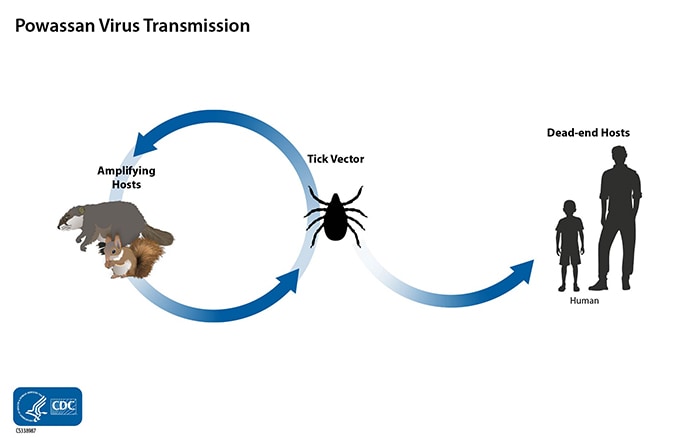Transmission
06/23/2021

Powassan virus is spread to people by the bite of an infected tick. Ticks become infected when they feed on groundhogs, squirrels, mice, or other rodents that have the virus in their blood. Infected ticks can then spread Powassan virus to people and other animals by biting them. People do not develop high enough levels of the virus in their blood to infect biting ticks. As a result, people are considered “dead-end” hosts for Powassan virus.
The virus is not transmitted from person to person, except in rare instances by blood transfusion. Because the virus can be transmitted through blood, persons who were recently diagnosed with Powassan virus infection should not donate blood and bone marrow for 120 days following infection.
Three types of ticks spread Powassan virus and are primarily found in the eastern half of the United States.
- Ixodes cookei (groundhog tick)
- Ixodes marxi (squirrel tick), and
- Ixodes scapularis (blacklegged or deer tick)
The groundhog tick and the squirrel tick rarely bite people. The blacklegged, or deer tick, which feeds mainly on white-footed mice and deer, often bites people. These bites can result in several types of diseases (e.g., Lyme disease).
Ticks can attach to any part of the body but are often found in hard-to-see areas such as the groin, armpits, and scalp.
Prevent getting sick with Powassan virus by preventing tick bites.